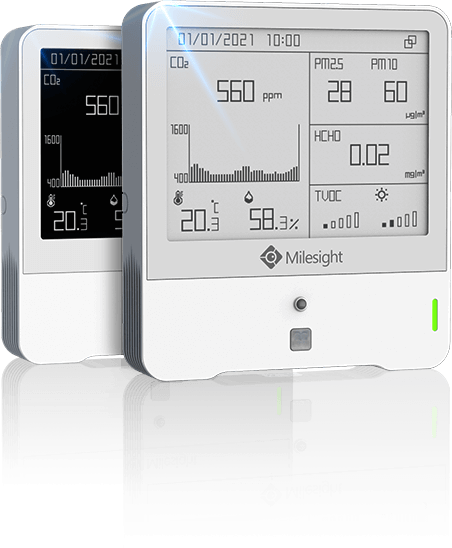Monitoring indoor air quality with IoT
A European spends more than 90% of his time indoors – at home, at work or at school. The quality of the air we breathe indoors has a direct impact on our health. Monitoring indoor air quality has become an increasingly important issue as air quality and adequate ventilation plays a significant role in preventing airborne disease transmission.
We believe that you have already experienced at least one of these consequences of poor indoor air quality:
- Loss of concentration and fatigue
- Nausea
- Headache
- irritation of the nose, eye and/or throat
- Dry, chapped skin and skin rashes
- Difficulty breathing
- Respiratory infections
- Allergies
- Damage to internal organs
What affects the quality of air?
Many pollutants, such as car emissions and pollen, enter enclosed spaces from outside. However, the use of candles, cleaning supplies, certain building materials, furnishings, adhesives, permanent markers, computers and printing equipment can also emit harmful chemicals called volatile organic compounds (VOCs). Some such air pollutants are harmful to human health or can cause environmental damage; most are not acutely toxic even though they can cause long-term health effects from continuous low level exposure.
In addition, hundreds of species of bacteria, fungi and moulds can grow in conditions of sufficient indoor humidity. Exposure to them can cause respiratory problems, allergies and asthma, and affect the immune system.
Furthermore, a high concentration of carbon dioxide (CO2) in the air, above 1000 ppm (parts per million), is likely to cause feelings of discomfort, such as fatigue, loss of concentration or headaches. Produced by human respiration the concentration of CO2 is directly proportional to the number of people in an indoor area. In general, the air quality will decrease rapidly with the increase in human activity.
Due to these factors, indoor air can be up to twice as polluted as outdoor air.
IoT sensors and continuous monitoring

The Internet of Things (IoT) offers solutions for monitoring the quality of indoor air composed of dedicated sensors connected to a web application. The solution allows businesses to view real-time data on temperature, relative humidity, indoor air pressure, CO2 and VOC levels from different areas of the building and to receive alerts when thresholds are exceeded.
Once alerted, immediate measures can then be taken such as:
- opening windows
- turning on an air humidifier, dehumidifier or purifier
- making sure the business is not heating or cooling unnecessarily.
Over time, taking a look at historical data can help assess whether building ventilation is adequate for the number of people occupying the space or whether the ventilation, cooling or heating system requires cleaning. It can also help identify poorly-ventilated spaces and routine peaks of particle concentration as well as direct the implementation of further measures to address problem areas.
If this might be of interest to you and your company, why don’t you contact us to find out more?
Improving indoor air quality means contributing to better productivity, health and well-being for our workers in the workplace, children in schools or nurseries and the general population in other public spaces.

